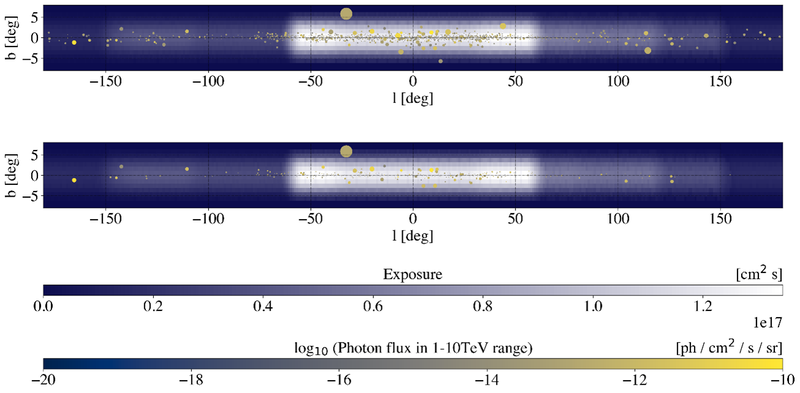Detekcija in karakterizacija izvorov viskoenergijskih žarkov gama
The sky seen in very energetic electromagnetic radiation (often called gamma rays) can be very different from what observe with our bare eyes. The sources of high energy photons can be very different from the sources of visible light.
An important and strong source of high energy photons is our galactic plane, and the astrophysical sources therein. The data from the upcoming CTA observatory will help us discover numerous pulsar haloes in the the TeV (109 eV) energy range. Our researchers in collaboration with researchers from CNRS (France) have quantified the prospects for detecting and characterizing pulsar haloes in observations of the projected Galactic Plane Survey (GPS), using a simple phenomenological diffusion model for individual pulsar haloes and their population in the Milky Way. The research has been published recently in Monthly Notices of the Royal Astronomical Society (MNRAS link).

Our researchers are also involved in the search and characterization of galactic and extra-galactic point sources of high energy photons. Deep learning-based algorithms developed for γ-ray data are used for these tasks, as they have so far already shown to be effective in analyzing optical data (ASID-L, ASID-FE).
